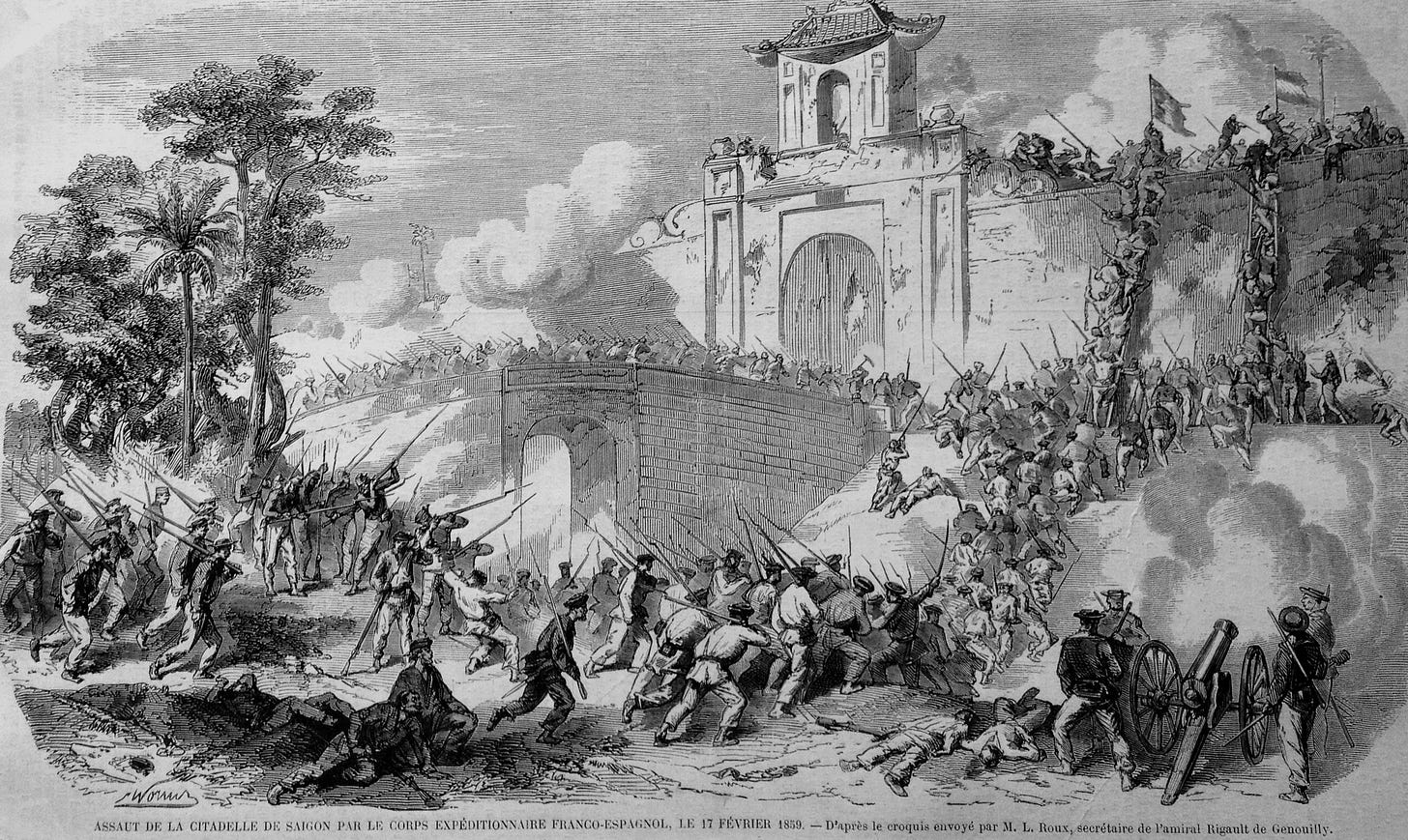Week 54: The Cochinchina Campaign of 1858-1862
The beginnings of the European conquest of Indochina/Vietnam

The Cochinchina Campaign was a series of military operations between 1858 and 1862, launched on behalf of the French Empire and the Kingdom of Spain against the Nguyễn period Vietnamese state. It was the opening conflict of the French conquest of Vietnam.
When in the world?
In the 1500s, the Portuguese explored the Vietnamese coast and reportedly erected a stele on the Chàm Islands to mark their presence. By 1533, they began landing in the Vietnamese delta but were forced to leave. They also had less interest in the territory than they did in China and Japan.
After they had settled in Macau and Nagasaki to begin the profitable Macau–Japan trade route, the Portuguese began to conduct trade with Hội An. Portuguese traders and Jesuit missionaries under the Padroado system were active in both Vietnamese realms of Đàng Trong (Cochinchina or Quinan) and Đàng Ngoài (Tonkin) in the 17th century.
The Dutch East India Company (VOC) established official relations with Tonkin in 1637 after leaving Dejima in Japan to establish trade for silk. By 1672, the English also established relations with Tonkin and were allowed to reside in Phố Hiến.
Who in the world?
The first French missionaries arrived in 1658, under the Portuguese Padroado. From its foundation, the Paris Foreign Missions Society under Propaganda Fide actively sent missionaries to Vietnam, entering Cochinchina in 1664 and Tonkin in 1666.
Spanish Dominicans joined the Tonkin mission in 1676, and Franciscans were in Cochinchina from 1719 to 1834. The Vietnamese authorities began to feel threatened by continuous Christianisation activities. After several Catholic missionaries were detained, the French Navy intervened in 1843 to free them, as the kingdom was perceived as xenophobic.
In 1857, the Vietnamese emperor Tự Đức approved the execution of two Spanish Catholic missionaries. This coincided with France dispatching a military expedition to China during the outbreak of the Second Opium War. France used these forces to subsequently intervene in Indochina. In November 1857, Napoleon III, emphasizing the rationale of Mission Civilisatrice, authorized Admiral Charles Rigault de Genouilly to lead a punitive expedition against Vietnam.
In September 1858, a joint French and Spanish naval expedition force landed at Tourane (Da Nang) and captured the town (with Filipino, Latin American, and Spanish troops from the Philippines). Between 1862 and 1867, the southern third of the country became the French colony of Cochinchina.
By 1884, the entire country was under French rule, with the central and northern parts of Vietnam separated into the two protectorates of Annam and Tonkin. The three entities - Cochinchina, Annam, and Tonkin - were formally integrated into the union of French Indochina in 1887.
The French administration imposed significant political and cultural changes on Vietnamese society. Most French settlers in Indochina were concentrated in Cochinchina, particularly in Saigon, and in Hanoi, the colony's capital.



